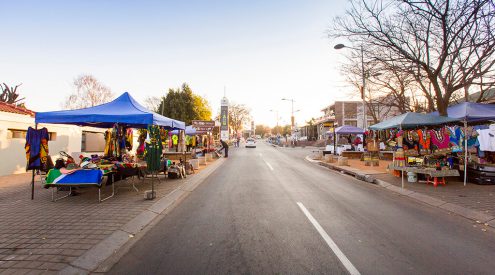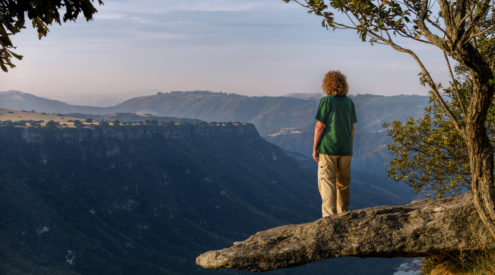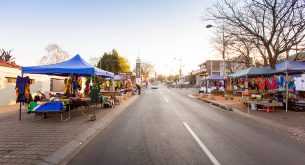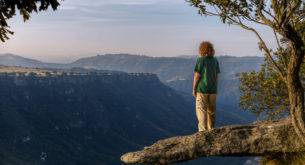We preferred to stay outside Agadir, and although we had to drive the 36 km roundtrip to the port daily, we could sleep next to the sea in a quiet spot with a great sea breeze, instead of in the city center with all the traffic and chaos.
We would awake to see the small fishing boats heading out through the surf with their tiny 10hp motors to drop their nets, in hope for a good catch. We spent our nights cooking on our small fireplace sponsored by my dad in Dakar. The icy wind blew with vengeance each night, and it sent chills down our spines as soon as the sun dipped below the horizon. We could not help ourselves and on one occasion in the supermarket in Agadir we bought 2 cold beers, which we tucked into whilst wrapped like a parcel in our sleeping bags. Not the worst way to end the day if I do say so myself.
Agadir had an interesting port. Although the port authority was strict and did not allow us to conduct an interview or to take cameras into the port, we filmed and observed the fishing vessels from the mountainside, which has its own history. A huge earthquake flattened Agadir and the city was completely destroyed. The ruins were buried, and from our vantage point overlooking the port, we were actually standing on the buried city. The port was large and filled with a combination of demersal trawlers, seine netters and artisanal vessels. The navy holds a strong force in the port, with 8 prepared vessels on standby.
It is awesome driving in the morning in Morocco, as there is no wind, the sea has a stunning shine on it, and the blueness seems to extent to eternity. It is easy to catch yourself drifting away into the blue imagining all the incredible fish, dolphins and whales we have seen on our journey thus far, that is until a sheep walks into the road or a crazy bus comes hurtling past you at unknowns speeds wobbling like jelly.
One of the most beautiful towns we have come across in Morocco so far has to be the picturesque town of Essaouira. This 18th century fortified town (named as a world heritage site by UNESCO) was once considered Morocco’s principal port where most of the goods brought across the Sahara caravan routes would make its way to the rest of the world. With powerful trade winds and an upwelling from the Canaries currant, the rather small fisheries port still pulls in a large amount of sardines and anchovies. It was great fun to watch all the unloading of the boats, and the sale and haggle of the fish vendors as they moved their product from the boats to the salted ice trucks, and onto the pavement for passers by to purchase.
We made our way from there to Marrakech, the former imperial city. Finding our way into the Riad in the center of the medina where we were spending a few nights, proved to be anything but easy. Here we had navigated across some of West Africa’s most challenging terrain, and we were virtually stumped by Morocco’s medinas. We maneuvered the car precariously down narrow, winding little streets. Every so often we had to slow to a virtual crawl as we tried to not rip apart half the vendors and shop terraces setup in the narrow streets. Blimey it was not easy, especially as we often had to block the flow of people and traffic in order to do a three-point turn just to turn a corner in out heavy lug of a car.
The view from the top of the riad (guesthouse for those of you who are not falmiliar) made up for the long slog through the tight streets, and we enjoyed a sunset from the rooftop looking over the Medina and being serenaded by a chorus of mosques calling people to prayer.
The port of Sidi Ifini was unlike any other we had seen so far up the coast of Morocco (well technically were in western Sahara here, but were not going to argue schematics). Just a few months before we arrived we were told about a huge clash between police and the locals of the area over fishing rights. Apparently, according to a local friend we made as we arrived, the local fishermen and villagers had blocked the fishing port with their trucks in an attempt to stop the export and packing of their sardines from their port to another factory in a different town. The locals blockaded the road with cars, rocks and rubble and then the army arrived. A military crack down ensued and people were bundled into jail at a furious pace, and some are still there according to our friend. Now in rolled the marine expedition, complete with cameras and all sorts of wondrous media paraphernalia. sterling timing.
Despite all this, and although there was a palpable sense of tension in the port, we were so well received by the fishermen and the locals that we hardly could believe that only a few months ago we might have been unceremoniously booted out of town at lightning pace. We were able to take our small touristic cameras into the port and snapped up some wonderful footage during the three days we stayed on the beach in the town. We even were allowed to watch a shark auction of Atlantic Blue sharks, although the cameras had to stay in the car, which was a pity because this is a small port in terms of fish catch and the auction was by no means small, so one can only wonder about the quantity of sharks caught in the far larger ports. Large amounts of sardines we moved with systematic precision off the boats and onto containers or straight into the backs of large iced salt trucks. It was organized chaos in its most purest form, and we slotted neatly into gaps between fishermen’s boots, documenting the scene with our small cameras.
A unique thing about the fishermen here in Sidi Ifini is their rather enterprising way of spear fishing. Every morning we would watch as a few local chaps would don their wetsuits and tie their guns to their ankles with old surf leashes left over from surfers visiting the area, or string. Then they would whip out a bicycle pump and begin to inflate a large truck tire tube, hop into the middle of it and swim out, doggy paddle style. The tube would act as their buoy as they dived under the water just off shore, and after an hour or so they would hop back on and paddle back.
We left Sidi Ifni winding our way slowly along the coastal road some 150 km to Agadir, the tourist capital of Morocco, or so they say. The route was very pretty meandering through rolling green fields, small villages painted stone red with blue doors, camels, sheep and cops.















